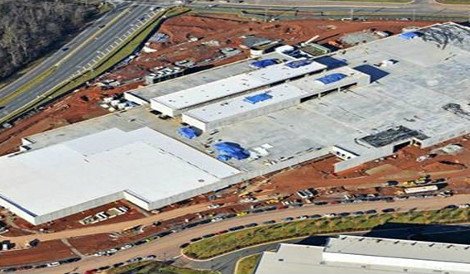In Ashburn, Virginia, DuPont Fabros Technology (DFT) is building its most energy efficient data center yet. When completed and filled with tenants' servers, the facility is expected to boast Power Usage Effectiveness (PUE) numbers few in the industry can report.
The wholesale data center provider expects the 12MW ACC7 building's annualized PUE to be below 1.14 when loaded to 75% of capacity. At 100% utilization, the number is expected to fall below 1.13.
Scott Davis, senior VP of operations at DFT, said the efficiency was primarily due to the design of the building's cooling system. The system uses a waterside economization plant whose free cooling capacity is supplemented by mechanical chillers.
“We expect to supplement chilled water production from the chillers only during peak demand times, which may be less than 25% of the year,” Davis said on the company's earnings call last week.
The second big change in the latest design, which has been in the making for several years, is electrical distribution technology. Because of recent technological progress in electrical infrastructure components, DFT was able to switch for the first time from a low-voltage distribution scheme to a medium-voltage one.
“Recent advances in medium-voltage switch-gear design and circuit-breaker technology have significantly improved the reliability of these products to the point they may now be considered for mission critical applications,” Davis said.
As a result, the facility's electrical feeders are now seven times smaller. Another result is a new highly efficient Power Distribution Unit (PDU), which is 99.6% efficient – a two-percentage-point gain in efficiency over conventional PDUs.
Because the PDUs' secondary voltage is 240V (as opposed to the conventional 120V), customers get to use all power available in their computer rooms. The medium-voltage design eliminates “stranded power,” which results from stepping the voltage down in traditional distribution systems.
Another big change for DFT is the ability to provide variable power densities in different computer rooms or within a single room. The densities range from 120W to 230W per square foot.
DFT will be offering a single room size, but will be able to split a room into sections with different densities, depending on customers' load requirements.
The company is using elements of this design in another ongoing construction project on the west coast. The second phase of DFT's Santa Clara, California, data center will have the same chiller-assisted waterside-economization cooling plant, 240V-capable PDUs and variable power densities.

